Geotextiles have many advantages in environmental protection projects, some of the main ones include:
1. Soil protection and erosion prevention: Geotextiles can be used to prevent soil erosion from water flow, wind and other factors, thereby protecting soil quality and slowing down land degradation. This is the optimal advantage of geotextiles used in environmental protection projects. The following is the details:
(1) Suppressing soil and water loss: Geotextiles can be used to suppress soil and water loss, especially on steep slopes, exposed land, and areas prone to erosion. It forms a protective layer that slows down water flow and effectively prevents soil erosion.
(2) Resist wind erosion: In areas prone to wind erosion, geotextiles can be used to withstand the impact of wind and sand, protect the soil from wind erosion, and maintain soil stability.
(3) Maintain moisture: The covering layer formed by geotextile on the soil surface helps slow down water evaporation and improve the soil's water retention capacity, thereby improving the growth environment of vegetation and promoting ecological balance.
(4) Promote vegetation growth: Geotextiles can be used in vegetation restoration projects to prevent soil erosion by providing a good growth environment, helping the roots of vegetation to take root, and promoting the healthy growth of vegetation.
(5) Prevent soil erosion from polluting water bodies: In construction sites, river banks, lakes and other places, geotextiles can prevent soil erosion caused by construction activities, prevent sediment and pollutants from entering water bodies, and maintain the cleanliness of water bodies.
(6) Soil remediation: On contaminated land, geotextiles can be used in soil remediation projects. It helps isolate and protect contaminated soil, preventing further spread of contaminants.
(7) Protection of cultural heritage: In some cultural heritage protection projects, geotextiles are used to protect exposed monuments and cultural relics from being affected by weathering and erosion.
Generally speaking, geotextiles have made positive contributions to the protection and improvement of the ecological environment by preventing soil erosion, retaining moisture, and promoting vegetation growth in environmental protection projects.
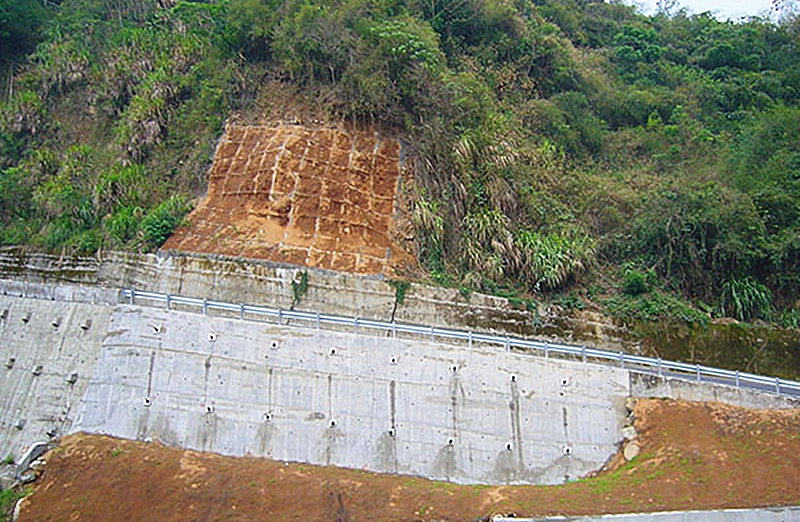
The role of geotextiles in protecting mountains prone to landslides
2. Water body treatment: In water body treatment projects such as rivers, lakes, and reservoirs, geotextiles can be used to build anti-seepage barriers, sedimentation tanks and other structures, helping to improve water quality and protect aquatic ecosystems. This is the unrivaled advantage of geotextiles used in environmental protection projects. The following is the details:
(1) River protection: Geotextile can be used in river protection projects as a bank protection material. It can effectively resist erosion by water flow, enhance the stability of river banks, and prevent river bed sedimentation.
(2) Water body clarification: Geotextiles are widely used in water body sediment sealing and clarification projects. By laying geotextiles on the bottom of the water, suspended particles in the sediment can be isolated and fixed, and the clarity of the water quality can be improved.
(3) Lake restoration: In lake restoration projects, geotextiles can be used to seal the bottom of the lake to prevent harmful substances in the lake bottom mud from being released into the water body, which helps to improve the water quality of the lake.
(4) Anti-seepage of sedimentation tanks: Geotextiles are often used in the construction of anti-seepage layers of sedimentation tanks. It can effectively prevent water penetration at the bottom, maintain the function of the sedimentation tank, and ensure the sedimentation effect.
(5) Reservoir slope protection: In reservoir projects, geotextiles can be used for reservoir slope protection to enhance the erosion resistance of the reservoir shoreline and improve the stability of the reservoir.
(6) Wetland protection: For the protection and restoration of wetland ecosystems, geotextiles can be used as the anti-seepage layer at the bottom of the wetland to prevent water penetration and protect the integrity of the wetland ecosystem.
(7) Water body slope protection: On the slopes of water bodies such as rivers and lakes, geotextile can be used as a protective layer to prevent slope erosion and maintain the ecological environment around the water body.
Through various applications in water management, geotextiles play key roles in protection, fixation of sediment, anti-seepage, and repair, helping to improve the water environment and protect water resources.
3. Ecological restoration: In ecosystem restoration and vegetation restoration projects, geotextiles can be used to control water flow, inhibit the growth of weeds, provide favorable conditions for the growth of vegetation, and promote the natural restoration of the ecosystem. This is the foremost advantage of geotextiles used in environmental protection projects. The following is a detailed description.
(1) Vegetation covering: Geotextiles can be used for vegetation restoration and protection. By laying geotextile on the surface of bare soil, you can provide a good foundation to help plant roots take root and prevent soil erosion.
(2) Soil and water conservation: As a soil and water conservation material, geotextile can play a key role in the ecosystem. It slows water flow and prevents rainwater from washing away exposed soil, helping to maintain soil structure and nutrients.
(3) Wetland restoration: For damaged wetland ecosystems, geotextiles can be used for wetland restoration. By covering the wetland surface with geotextile, excessive evaporation of water can be prevented and the regrowth of wetland vegetation can be facilitated.
(4) Habitat protection: Geotextiles play a key role in habitat protection. In areas where plant and animal habitats have been damaged, geotextiles are used to repair the soil and provide support for vegetation, helping to restore and protect the habitat.
(5) Riverbank ecological restoration: Geotextiles can be used to repair riverbank ecosystems. By covering the river bank with geotextile, it can prevent water flow from eroding the river bank, promote the growth of vegetation, and maintain the ecological balance of the river bank.
(6) Tree protection: In ecosystems, especially in areas where trees are planted and grown, geotextiles can be used for tree protection. It provides an effective protective layer against grass weathering, weed growth, and contributes to healthy tree growth.
Through these applications, geotextiles can help rebuild damaged ecosystems, promote vegetation growth, and improve the stability and sustainability of ecosystems in environmental protection projects.
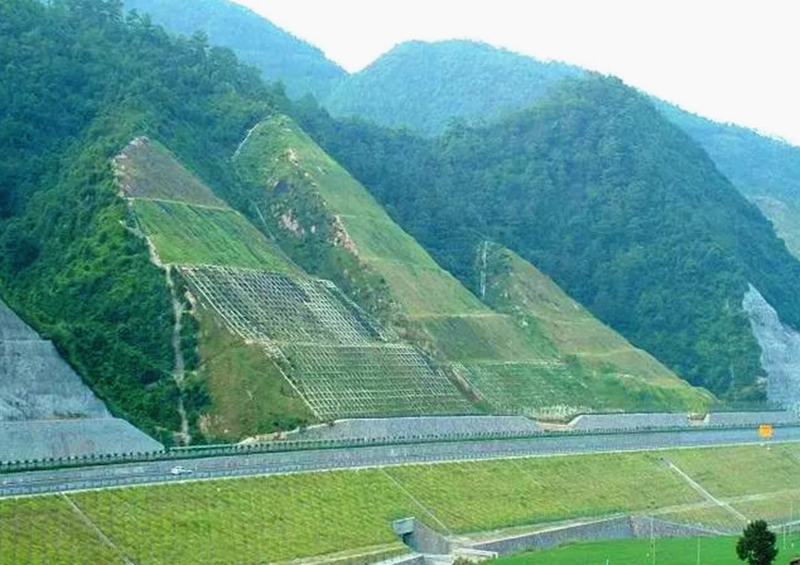
The specific performance of geotextiles in ecological restoration
4. Pollution prevention and control: Geotextiles can be used to build isolation layers to prevent groundwater or soil from being damaged by pollutants and ensure groundwater quality. Pollution prevention and control is an exceptional advantage of geotextiles used in environmental protection projects. The following is a detailed description.
(1) Soil anti-pollution: Geotextile can be used as an anti-pollution barrier to prevent soil from being damaged by chemicals, harmful substances or other pollutants. By laying geotextiles on the surface of contaminated land, it can effectively isolate and slow down the penetration of pollutants and prevent them from entering the deep soil.
(2) Water body protection: The application of geotextiles at the bottom of and around rivers, lakes or other water bodies can prevent pollutants from entering the water body and protect the health of the water body ecosystem. It can be used to build an anti-seepage layer at the bottom of a water body to prevent harmful substances at the bottom from penetrating into the water.
(3) Waste covering: In waste management, geotextiles are often used to cover garbage dumps to prevent harmful substances in the waste from leaking into groundwater or soil, thereby reducing pollution to the surrounding environment.
(4) Chemical pollution control: Geotextiles can be used in chemical plants, petrochemical plants and other places to build anti-seepage layers to prevent harmful chemicals from penetrating into the soil or groundwater and reduce the risk of pollution to the surrounding environment.
(5) Ecological restoration: In polluted ecosystems, geotextiles can be used to repair soil and water bodies. By covering with geotextile, the spread of pollutants can be controlled, providing favorable conditions for the growth of vegetation, and contributing to the self-healing of the ecosystem.
(6) Prevent soil erosion: Geotextiles can also be used to prevent soil erosion on contaminated land, prevent pollutants from entering water bodies through water erosion, and protect the water quality of the surrounding environment.
Through these applications, geotextiles play an important role in environmental protection projects, effectively preventing and controlling the spread of pollutants and protecting the quality of soil and water bodies.
5. Landfill covering: In landfills, geotextiles can be used to make covering layers to prevent waste from being piled in the open and reduce the risk of odor diffusion and pollution. It is also a mighty advantage of geotextiles used in environmental protection projects.
(1) Prevent leachate penetration: As an anti-seepage material, geotextile covers the surface of the landfill, effectively preventing leachate (liquid produced from garbage) from penetrating into the ground and preventing groundwater pollution.
(2) Prevent gas diffusion: During the landfill process, some harmful gases, such as methane, will be produced. Geotextile covering can prevent these harmful gases from spreading to the surrounding environment and reduce atmospheric pollution.
(3) Keep garbage stable: Geotextiles can cover the surface of garbage to prevent erosion by external environmental factors such as wind and rain, and maintain the stability of the landfill.
(4) Slow down rainwater penetration: Covering with geotextile can reduce the speed of rainwater directly penetrating into the landfill, slow down the impact of water on garbage, and help slow down the speed of garbage decomposition.
(5) Reduce the emission of odor: The covering effect of geotextile helps to reduce the exposure of organic matter in the garbage to the air, slows down the decomposition process of organic matter, thereby reducing the emission of odor.
(6) Improve the aesthetics of the landfill: Covering with geotextile can improve the appearance of the landfill, improve the aesthetics of the site, and reduce the negative impact on the surrounding environment.
Through these functions, geotextiles play important functions such as preventing seepage, preventing pollution, and maintaining stability when covering landfills, helping to reduce the negative impact of landfills on the surrounding environment.
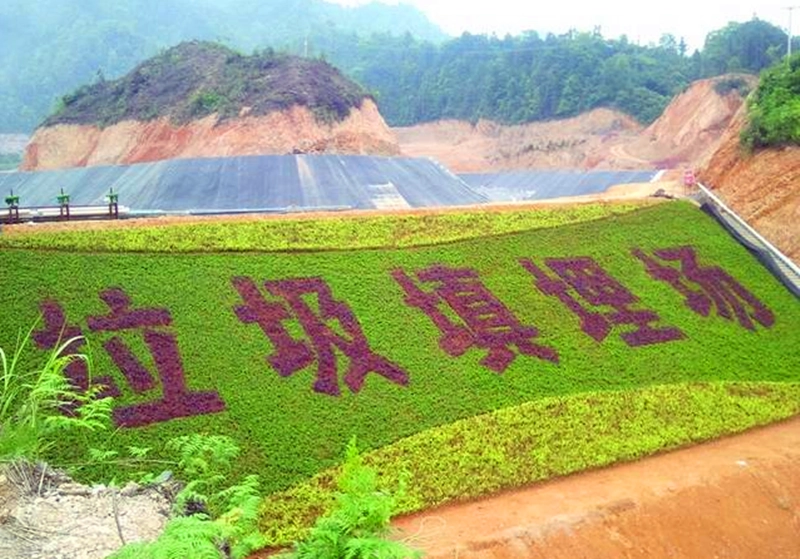
Specific operation cases of geotextiles in landfills
6. Desertification prevention and control: In desertification prevention and control projects, geotextiles can be used to fix sand and soil, improve the land quality in desert areas, and prevent land degradation.
(1) Desert vegetation restoration: In desertified areas, using geotextiles to cover sand can slow down the migration of sand dunes and provide a relatively stable growth environment for vegetation. Geotextile covering can reduce the flying of sand and dust and help the growth of plants, thereby achieving the restoration of desert vegetation.
(2) Inhibiting sand dune migration: Desert areas often face the problem of sand dune migration. Geotextiles can be covered on the desert surface to form a physical barrier that inhibits sand erosion, slowing down or preventing the migration of sand dunes, and helping to improve the stability of the land.
(3) Soil and water conservation: As an anti-penetration material, geotextile can be used in soil and water conservation projects in desertification prevention and control. By laying geotextiles in desert areas, it can slow down the rapid penetration of rainwater and promote water penetration into the soil, which helps to increase soil moisture and improve vegetation growth conditions.
(4) Desertification prevention and control projects: The application of geotextiles in desertification control projects, such as building sand barriers and windbreaks, can change the ecological environment of desert areas through physical means, slow down the process of desertification, and improve the sustainable use of land.
(5) Sand fixation and afforestation: Using geotextiles to cover desert areas helps to fix sand and provide a good foundation for subsequent afforestation projects. Geotextiles can create a relatively stable soil environment in desert areas, which is conducive to the growth of plant roots.
Through the above functions, geotextiles play an important role in desertification prevention and control, providing an effective means to improve the ecological environment of desert areas and promote vegetation restoration.
7. Land reclamation: In land reclamation in mining areas or industrial areas, geotextiles can be used to improve the land structure and prevent the spread of acidic soil, making the land fertile again.
(1) Enhanced land stability: Geotextiles can be used to prevent soil erosion and improve land stability. During the land reclamation process, covering the geotextile can effectively protect the exposed land from wind erosion, water erosion and other erosion, prevent soil loss, thereby enhancing the stability of the land.
(2) Inhibit the growth of invasive plants: Geotextile can be used as a covering material to inhibit the growth of invasive plants. During the land reclamation process, invasive plants may exist in some areas. By covering them with geotextiles, the spread of these plants can be effectively limited, providing good conditions for subsequent vegetation restoration and land use.
(3) Soil and water conservation: As an anti-penetration material, geotextiles can be used in soil and water conservation projects. In land reclamation, the rational placement of geotextiles can slow down the rapid penetration of rainwater, promote water penetration into the soil, help increase soil moisture, and improve the moisture status of the land.
(4) Improve land quality: Geotextile covering can help improve the physical properties of soil, slow down soil erosion, and help improve land quality. Through the application of geotextiles, a soil environment suitable for plant growth can be created and favorable conditions for land reclamation can be created.
(5) Prevent land degradation: Covering with geotextile can effectively prevent further land degradation. In land reclamation projects, the rational application of geotextiles can reduce the degree of land degradation, protect land resources, and make it more suitable for agriculture, forestry and other uses.
In summary, geotextiles play an important role in land reclamation in environmental protection projects. Through their multi-faceted functions, they help improve the land environment and promote the sustainable use of land.
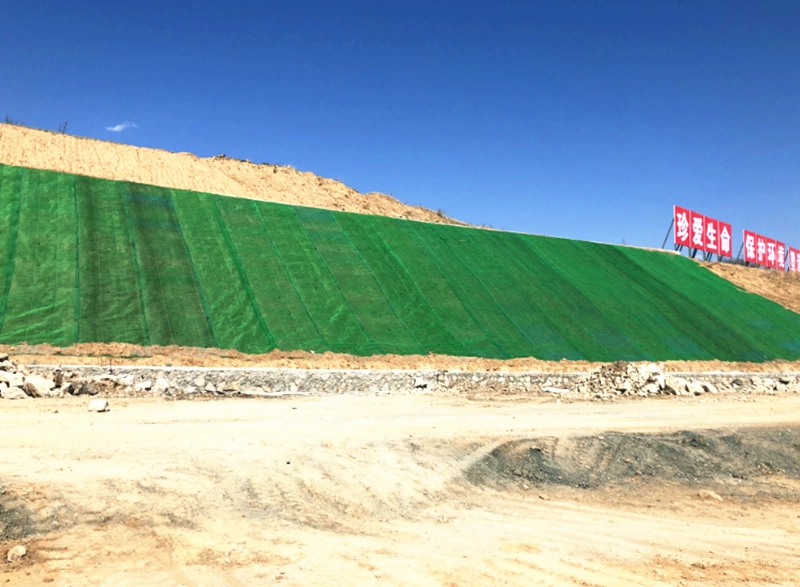
8. Rainwater management: The use of geotextiles helps the penetration and dispersion of rainwater, slows down surface runoff, and reduces the risk of urban flooding.
(1) Rainwater infiltration control: Geotextiles can be used to construct rainwater infiltration systems. Through reasonable design and layout of geotextiles, the speed and direction of rainwater infiltration can be controlled. This helps slow stormwater runoff, improves water penetration into the soil, and reduces flood risk.
(2) Suppress soil erosion: On steep or exposed land surfaces, geotextiles can be used to prevent rainwater from eroding the soil and reduce soil erosion. By effectively inhibiting soil erosion, it helps maintain the water quality of water bodies and alleviate siltation problems in rivers and waters.
(3) Rainwater collection and storage: Geotextiles can be used as part of a rainwater collection system to help collect and store rainwater. This has a positive effect on the rational utilization and management of rainwater in arid areas or water shortage areas.
(4) Prevent runoff pollution: Geotextiles can be used to establish rainwater filtration systems to reduce the pollution of runoff water by intercepting solid particles and pollutants in rainwater. This has a positive impact on maintaining the water ecological environment and water quality.
(5) Prevention and control of urban floods: In urban environments, the application of geotextiles can help manage urban rainwater, slow down the speed of rainwater runoff, and improve the efficiency of urban drainage systems, thereby reducing the risk of urban floods.
(6) Improve land drainage: For some areas with poor drainage, geotextiles can be used to improve the land drainage system, improve the drainage performance of the land, and prevent land moisture and water stagnation caused by rain accumulation.
Through the above functions, geotextiles play an important role in rainwater management in environmental protection projects, helping to achieve effective utilization of rainwater and protect water resources.
Overall, the greatest advantage of geotextiles in environmental protection projects lies in their multifunctional application, which can effectively solve environmental problems such as land degradation, water pollution, and ecological restoration, and provide technical support for sustainable development and ecological balance.
![]() 200g Staple fiber non-woven geotextile.pdf
200g Staple fiber non-woven geotextile.pdf
![]() 300g PET geotextiles test report.pdf
300g PET geotextiles test report.pdf
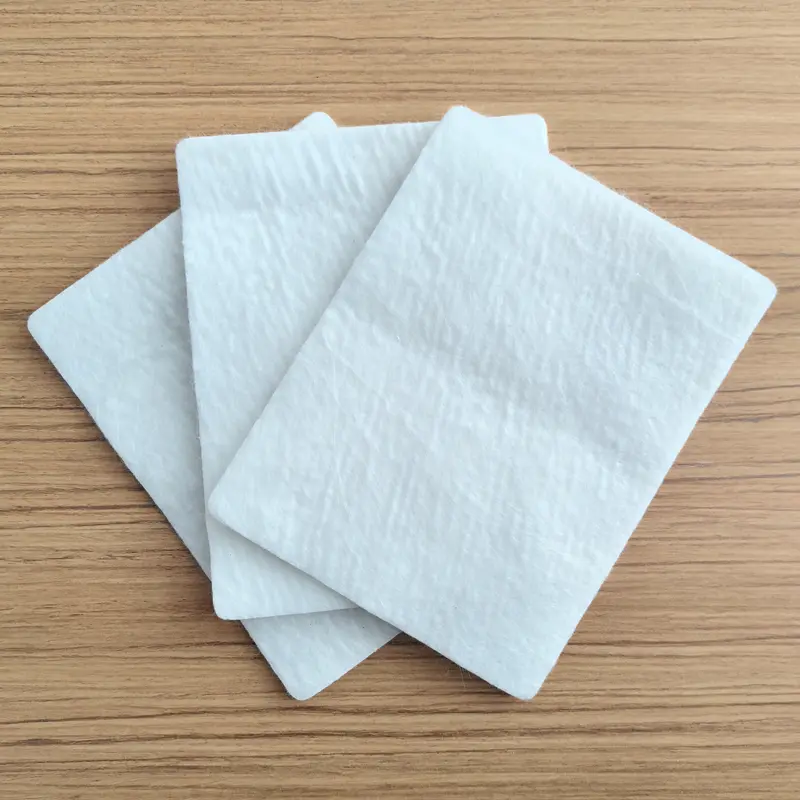

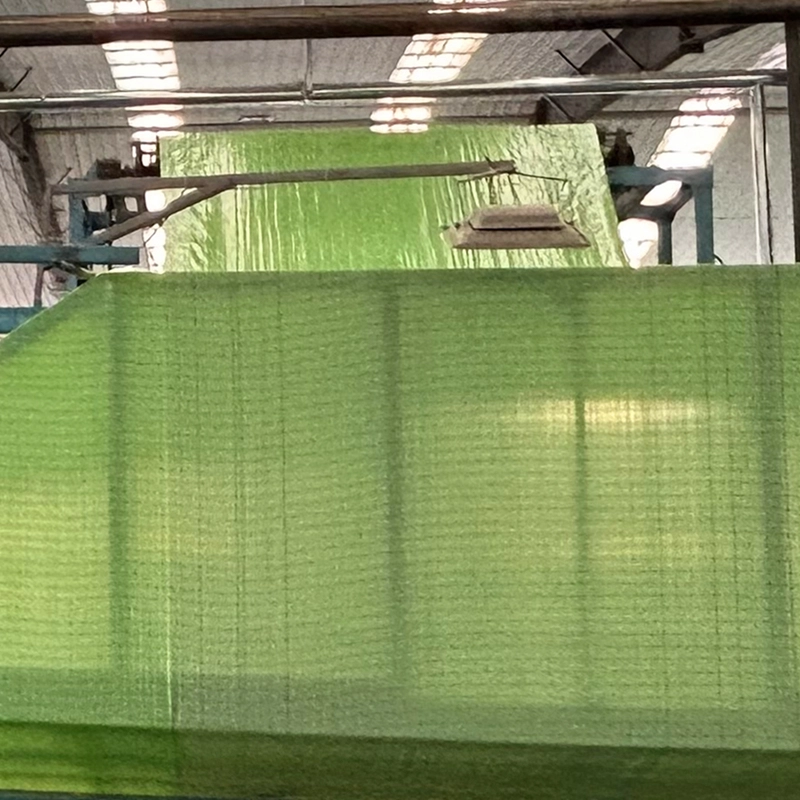
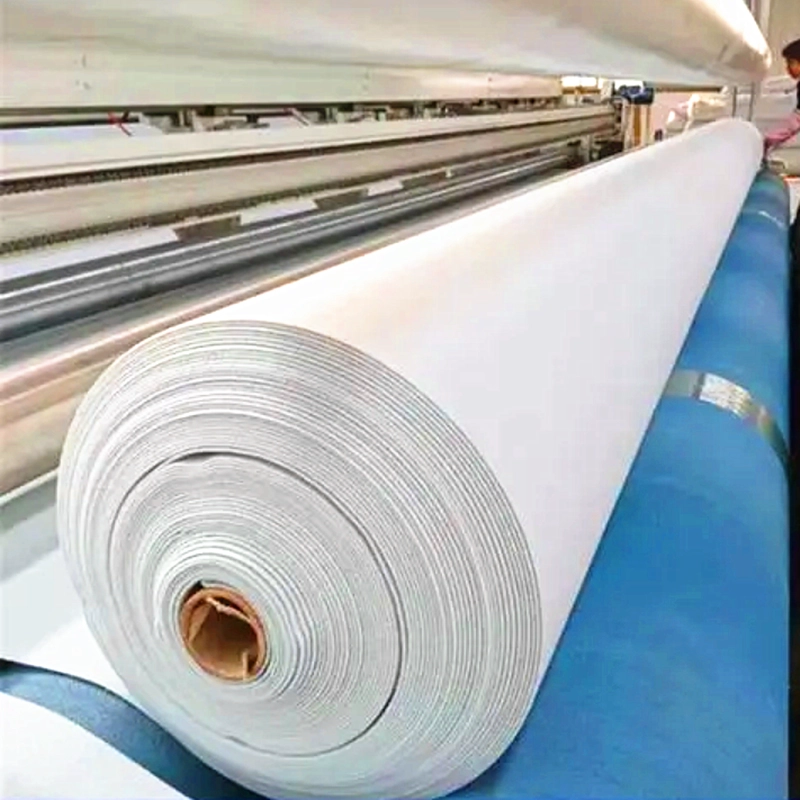
503.webp)
759.webp)
241.webp)
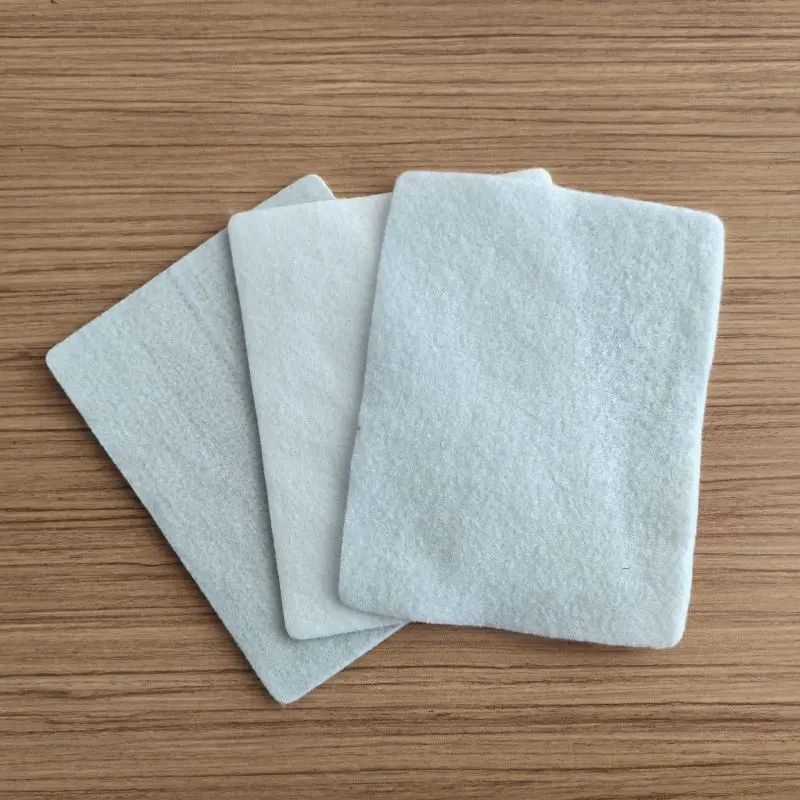
191.webp)